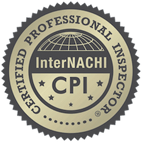How Do Home Inspectors Test for Mold?
Mold is something many homeowners worry about, and for good reason. It can cause health problems, damage your home, and spread quickly if not treated. That’s why mold testing is an important part of a home inspection, especially if there are signs of moisture or water damage. But how do home inspectors test for mold? Let’s break it down in simple terms.
What Is Mold and Why Is It a Problem?
Mold is a type of fungus that grows in damp and warm places. It can appear in many colors like black, green, or white and may smell musty. Mold spreads by releasing tiny spores into the air, which can be harmful if breathed in over time.
Some people may experience health problems from mold, including:
- Sneezing and coughing
- Skin rashes
- Headaches
- Breathing issues
Mold can also ruin walls, ceilings, carpets, and other parts of your home. That’s why spotting and removing mold early is so important.
When Do You Need a Mold Inspection?
Not every home inspection automatically includes mold testing. However, you might need a mold inspection if:
You see visible mold growth
- You smell a musty odor
- You have had recent water leaks or flooding
- Someone in the home has unexplained allergies or breathing problems
- You are buying or selling a home and want peace of mind
In these situations, a mold inspector can help find out if there’s mold in the home and how serious it is.
What Does a Mold Inspector Do?
A mold inspector is trained to look for signs of mold and moisture. They know where to check and how to use special tools to detect mold. The mold inspection process often includes:
- Asking questions about water damage or leaks
- Looking for signs of mold with the naked eye
- Using moisture meters to find damp areas
- Taking air and surface samples for lab testing
Let’s take a closer look at the steps involved in mold testing.
Step 1: Visual Inspection
The first step in the mold inspection process is a visual check. The inspector will walk through your home looking for visible mold. They’ll check common areas like:
- Bathrooms and kitchens
- Basements and attics
- Around windows and plumbing
- Behind appliances
- Inside HVAC systems
They’ll also check for signs of water damage, like stains, bubbling paint, or warped walls. These can all point to moisture problems where mold might grow.
Step 2: Using Moisture Tools
- Mold needs moisture to grow. That’s why inspectors use tools like:
- Moisture meters – to check if building materials like drywall or wood are damp
- Thermal imaging cameras – to spot hidden leaks behind walls or ceilings
These tools help inspectors find mold that might not be visible yet. Even if you can’t see mold, damp areas are a warning sign.
Step 3: Air Sampling
Sometimes, the mold isn’t easy to see. That’s when air sampling becomes helpful. The inspector uses a special pump to pull in air and capture mold spores onto a slide or filter.
The sample is then sent to a lab, where scientists check it under a microscope. They look for the type and number of mold spores in the air. This can tell you:
- If there is mold present in the home
- What kind of mold it is
- How much mold is in the air compared to outside levels
Air sampling is useful when someone is having symptoms, but no visible mold is found.
Step 4: Surface Sampling
If mold is found on surfaces, like walls or floors, the inspector may take a surface sample. This can be done using:
- Swabs – for small mold spots
- Tape lifts – to lift mold from a surface
- Bulk samples – by cutting out a small section of the material
These samples are also sent to a lab to learn more about the type of mold and its potential danger.
Step 5: Lab Testing and Results
Once the samples are tested in a lab, the mold inspector will receive a report. This report includes:
- The types of mold found
- The amount of mold spores in the air
- Whether the mold levels are normal or high
- Suggestions for cleaning or remediation
The inspector will explain the results in simple terms and help you decide what to do next.
What Happens If Mold Is Found?
If mold is found in your home, don’t panic. The inspector will guide you on what to do. Depending on the severity, you may need:
- Professional mold removal
- Fixing leaks or moisture problems
- Cleaning and drying the area
- Improving ventilation
In some cases, mold can be cleaned with simple solutions. In more serious cases, a mold remediation company might be needed to safely remove it.
Can You Test for Mold Yourself?
There are do-it-yourself mold test kits, but they are not as reliable as hiring a trained mold inspector. Home test kits can miss hidden mold or give confusing results. Professional mold testing is more accurate and includes expert advice on how to fix the problem.
How to Prevent Mold in Your Home
Prevention is always better than cleanup. Here are some tips to avoid mold:
- Fix leaks right away
- Use exhaust fans in kitchens and bathrooms
- Keep humidity levels low (30-50%)
- Use a dehumidifier in damp areas like basements
- Clean and dry areas that get wet within 24–48 hours
Final Thoughts
Mold testing is an important part of protecting your home and health. The mold inspection process helps you find hidden mold, understand the type of mold, and plan how to remove it safely. Whether you’re buying a new home or dealing with water damage, a trained mold inspector can give you peace of mind.
If you suspect mold in your home, don’t wait—schedule a professional mold inspection with Guardian Angel Inspections today!
Disclaimer: The information on this website and blog is for general informational purposes only and is not professional advice. We make no guarantees of accuracy or completeness. We disclaim all liability for errors, omissions, or reliance on this content. Always consult a qualified professional for specific guidance.
Share this entry







